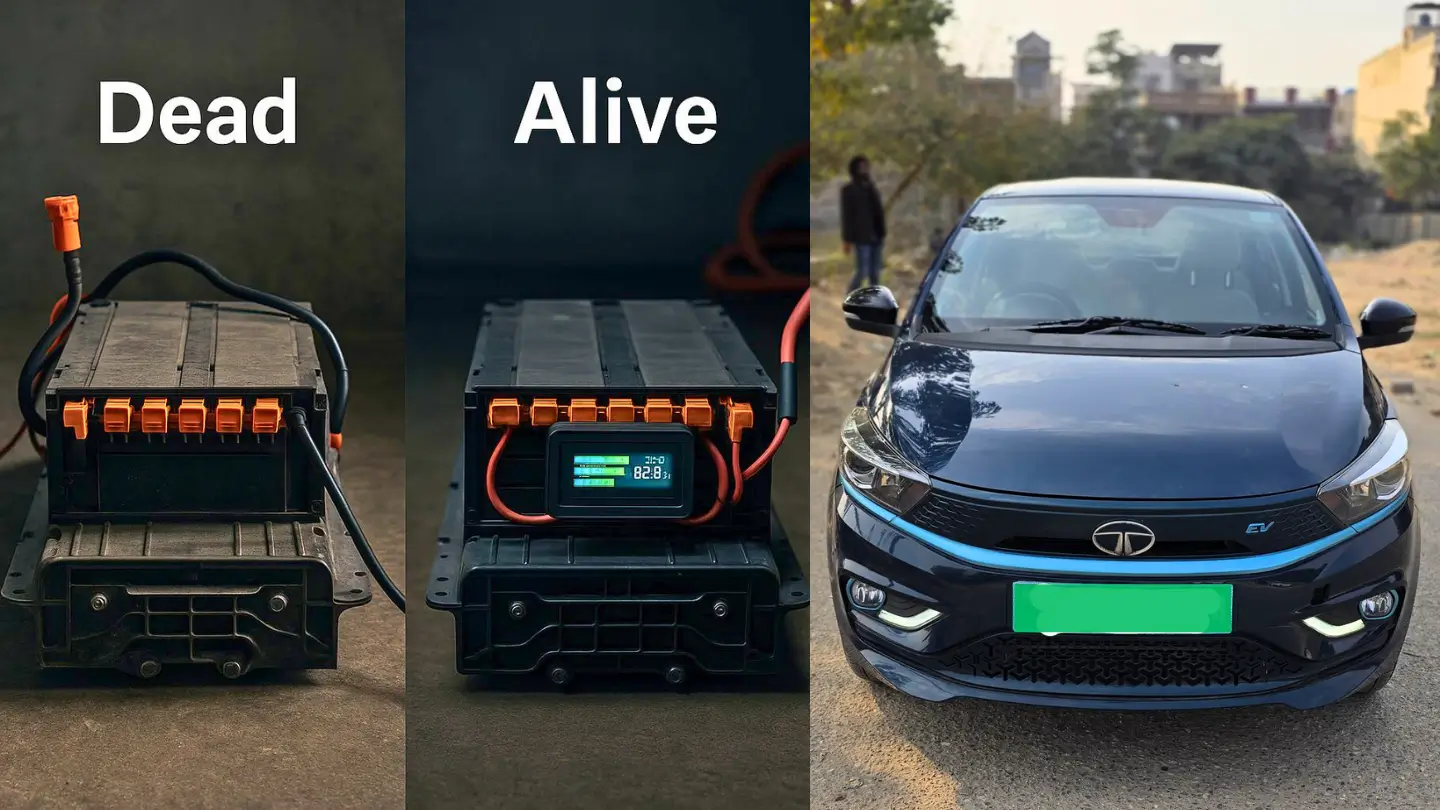
As electric vehicles (EVs) gain traction across India, one of the biggest concerns for both fleet operators and private owners is the steep cost of battery replacement. Often, when a battery stops responding or fails to charge, it’s quickly written off as unrepairable.
But a recent real-world example involving a Tata Tigor EV challenges that assumption.
Instead of replacing the entire battery pack, a focused revival process brought it back to life, proving that repair can be both technically feasible and economically sensible.
This article breaks down, step by step, how a high-voltage Lithium Iron Phosphate (LFP) battery—initially declared “dead”—was successfully restored by a homegrown battery diagnostics firm.
The total repair cost? Just ₹55,000, compared to ₹6,00,000 quoted for a full replacement by the original manufacturer.
Most EV batteries are built to last years, but under certain conditions, such as deep discharge, cell imbalance, or long-term inactivity, they may appear non-functional.
Replacing a traction battery, especially after the warranty period, can cost several lakhs.
For fleet operators managing dozens or hundreds of vehicles, this becomes a significant financial concern.
What this case reveals is that not all battery failures are absolute.
With the right diagnostics and technical approach, batteries that appear unusable can sometimes be repaired and returned to service safely.
A Tata Tigor EV fitted with a 108s high-voltage LFP battery (345.6V nominal) was brought in for assessment after becoming completely immobile.
The chronology of the revival process is outlined below:
The case study, shared through a detailed LinkedIn post by Mr. Romesh Gupta, Founder and Managing Director of Yanti Innovative Electromotive Solutions Pvt. Ltd..
An emerging company specialising in AI-powered EV battery diagnostics and revival, spanning seven days and highlights the potential of data-driven battery analytics and targeted restoration techniques to significantly reduce both costs and electronic waste.
| Parameter | Value |
|---|---|
| Recovered Capacity | 203Ah (94%) |
| OEM Replacement Cost | ₹6,00,000 |
| Repair Cost | ₹55,000 |
| Total Savings | ₹5,45,000+ |
| Time Required | 7 Days |
This case is relevant to multiple stakeholders in India’s EV ecosystem:
This case shows that just because an EV battery isn’t responding doesn’t mean it’s beyond saving.
With the right diagnostic tools and technical know-how, even badly imbalanced or seemingly dead batteries can be brought back to life.
Let’s Understand How much it costs to replace an electric car battery in India.
As India’s EV market continues to grow, repair and revival solutions like these are likely to play a big role in making electric mobility more affordable, reliable, and sustainable.
This post was last modified on August 1, 2025 12:48 pm
In a major stride toward sustainable mobility, the Himachal Pradesh Police have incorporated six custom-modified Tata Curvv electric vehicles into…
In India, the automotive and transport industry is undergoing significant changes. This transformation isn't just about improving roads and infrastructure;…
Montra Electric, the clean mobility brand from the prestigious Murugappa Group, has launched the All-New Super Auto, a next-generation electric…
Union Minister Nitin Gadkari (Minister of Road Transport and Highways of India) has once again made a bold statement that’s got…
India’s electric four-wheeler (E4W) market slowed in September 2025, following a record-breaking August, with 15,038 units sold, representing an 18%…
India’s EV market hit 1,04,056 electric two-wheeler sales in September 2025. TVS, Bajaj, and Ather led the chart, while Ola…
This website uses cookies.
View Comments
India’s EV battery repair sector is growing repairs cheaper than replacements, boosting sustainability, local jobs, and electrification acceleration.